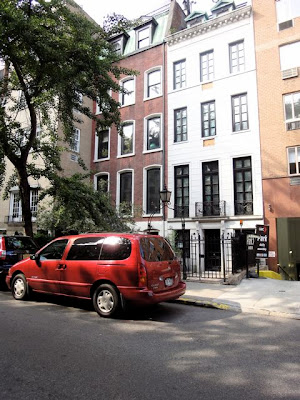If I were limited to one plant family (Heaven
forbid) it would be hydrangeas. They
come into their own in July, which is when I settle in for the summer, or try
to. I miss the peonies and iris almost
every year, but have never missed the hydrangeas. The two northeast native hydrangea species
that work for us in the Catskills are arborescens, and quercifolia. The macrophylla, though risky here, is too
good to resist, so we have taken a flyer. The temperamental Nikko Blue will not
bloom well this year because of a late spring frost, but we have last year to
remember. Petiolaris is clambering over
a shed, for late summer we’ve planted Tardiva, and we are ready for further
trials.
 |
| Early Stage Arborescens |
Preparation
and maintenance are not difficult. For best performance, the soil should be
amended with organic material, acid in character, and well-drained. Moisture
seems to be the critical growth factor.
Hydrangeas must be well-watered; a drooping plant is a sure sign there
is not enough moisture in the soil. As
the summer sun swings around on its daily course and hits the plant directly,
you can watch an under-watered hydrangea wilt.
 |
| Unidentified Hydrangea in a Connecticut Garden |
Pruning,
on the other hand is tricky. If your
hydrangea refuses to bloom, incorrect pruning is likely to be the culprit. It is a tricky task, and your best guide is
Michael Dirr’s masterly book, Hydrangeas.
Week One
Week One
Enjoy the holiday weekend. Everything can wait.
|
Beware of
ticks. This is supposed to be a
particularly bad year. No flip-flops in
the garden, please.
|
Keep
track of summer dry spells –- when they start and how long they last. A simple rain gauge will tell you when it’s
wise to water.
|
It’s time
to cage or stake tomatoes. If you stake
them they will need to be tied periodically and trimmed. Remove suckers or short leafy stems that
sprout in the axils of the side or main stems.
|
If you
have newly purchased flowers and shrubs, they will be blooming earlier this
year than next. Make a note in your journal.
|
Week Two
For
terraces and patios, try herbs in pots instead of flowers. We are doing it this year, and it’s nice
having them closer to the kitchen.
|
Week Three
Lay in a good supply of stakes while
they are still available. Or make your own by saving twiggy branch
cuttings. They are good for propping up
billowy perennials like peonies or baptisia.
|
Set
stakes early for all plants likely to need support. Landscape –size perennials bought late in the
season will need them. Set stakes well
below the top of the plants.
|
Hellebores
are getting better each year. They are
still holding their foliage in our garden, along with the heucheras.
|
Week Four
Once your annuals start to flower,
pick faded flowers so that they don’t form seed pods. Seed formation drains strength and will
prevent reflowering.
|
If you are growing dahlias and are
pinching back for bigger flower heads, cease and desist by August 1.
|
This is the month when you realize
you need a shade tree. Pick your
location now, decide on the tree and place your order for fall planting.
|
Replenish the mulch in your flower
borders to keep roots cool and to maintain moisture in the upcoming dry
season. Water well first so that you are
not mulching dry soil.
|




















